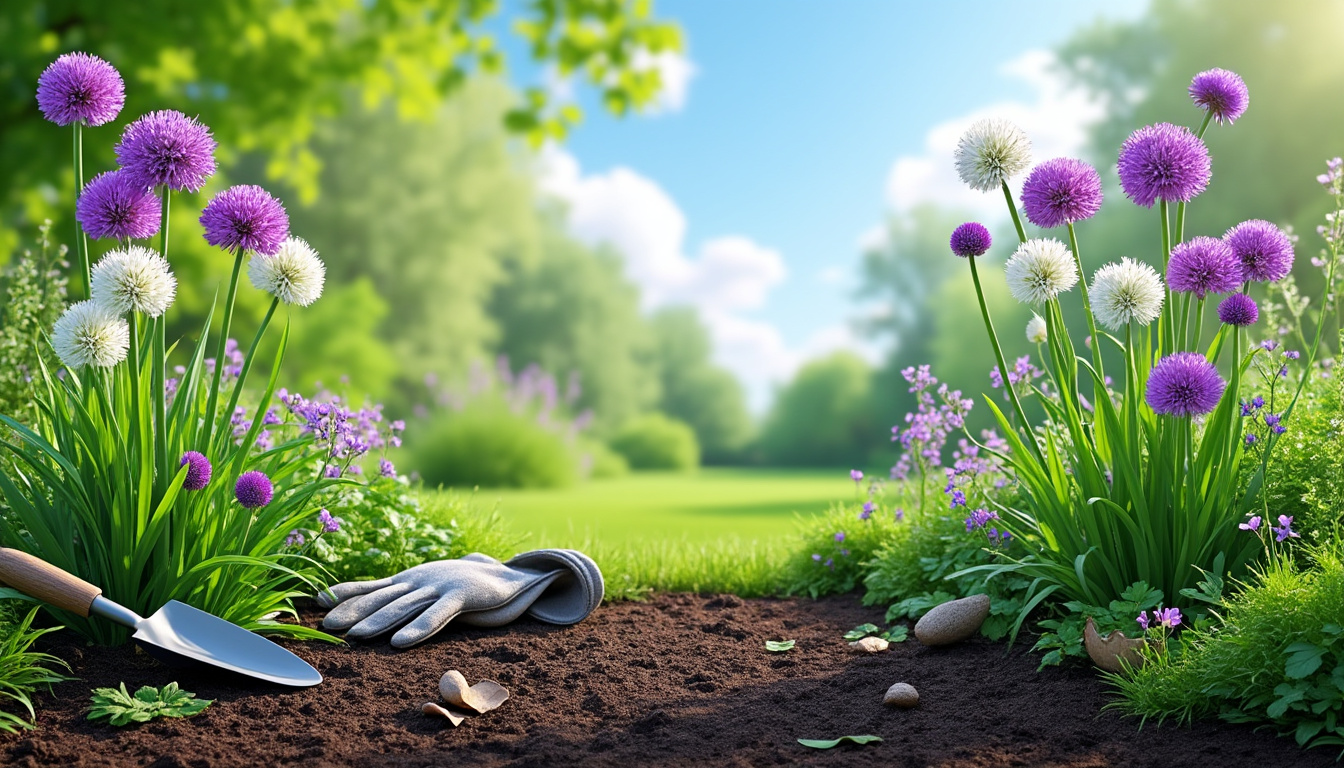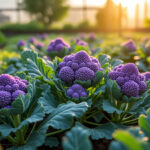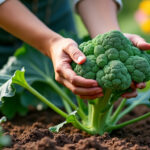This guide explores the essential timing, care, and considerations for planting alliums to ensure vibrant blooms and a flourishing garden. Understanding their growth cycle, ideal planting periods, and soil conditions is vital for gardeners who want to enjoy these stunning flowers. With the right techniques, alliums can become a breathtaking focal point in outdoor spaces.
Understanding Allium Growth Cycle and Dormancy
To cultivate alliums effectively, comprehending their growth cycle is critical. These remarkable plants, part of the Amaryllidaceae family, go through several distinct stages. During spring, the foliage sprouts from the bulb, showcasing slender and elongated leaves. By summer, alliums produce their characteristic spherical flower heads atop sturdy stems, enhancing the garden’s visual appeal. After the blooming phase, they enter dormancy, during which plants retreat underground to replenish energy for future seasons.
Key Growth Phases
During the spring season, alliums begin their growth process with vigorous foliage development. As temperatures rise, flower heads form, culminating in a spectacular bloom during late spring and early summer. The dormancy stage, signified by wilting foliage, plays a vital role in reserving energy for the upcoming growth cycle.
Determining the Right Time to Plant Alliums for Optimal Results
Choosing the perfect time to plant alliums is crucial for their success. Fall is generally the recommended planting season since bulbs can establish roots before winter. Ideally, allium bulbs should be planted between late September and November. This allows them to benefit from cool temperatures, preparing them for robust growth in the spring.
In warmer climates, late fall planting is permissible; however, for cooler regions, planting should take place early in the fall season, ensuring the bulbs can develop before frost sets in. Soil temperature should ideally be between 10-15°C (50-60°F) for optimal root development.
Soil Considerations and Planting Depth
Alliums thrive in well-drained soil enriched with organic matter. Soil pH should ideally range between 6.0 and 7.5 to promote healthy growth. When planting, bulbs should be placed at a depth of 4-6 inches (10-15 cm)—or 6-8 inches (15-20 cm) for larger varieties—ensuring they have ample space to grow without risk of heaving out of the ground.
| Soil Requirements | Ideal pH Range | Planting Depth |
|---|---|---|
| Well-drained, rich in organic matter | 6.0 to 7.5 | 4-6 inches (10-15 cm) for regular; 6-8 inches (15-20 cm) for larger types |
Step-by-Step Guide for Planting Alliums
Follow these essential steps to ensure a successful allium bulb planting experience:
- Select a suitable location: Choose a sunny area in your garden or an adequately draining container.
- Prepare the soil: Clean the area of weeds and debris. Loosen soil to a depth of 8-10 inches (20-25 cm).
- Dig planting holes: Consider the recommended depth and spacing of 4-6 inches apart for regular bulbs.
- Place the bulbs: Ensure the pointed end is facing upwards when positioning them in the holes.
- Backfill and water: Firm the soil around the bulbs and provide thorough watering to encourage root establishment.
Essential Care Practices for Vibrant Alliums
To maintain robust alliums, some essential care practices should be integrated:
Watering and Fertilizing
Alliums require approximately 1 inch (2.5 cm) of water weekly, particularly during their growing phase. Gradually reduce watering as the foliage dies back. Applying a balanced fertilizer in early spring aids in leaf and bloom development, keeping in mind not to over-fertilize, as excessive nitrogen may impede flowering.
Mulching for Optimal Growth
Incorporating a 2-3 inch (5-8 cm) layer of organic mulch around alliums helps suppress weed growth, retain moisture, and regulate soil temperature. This practice promotes a healthier environment, allowing alliums to flourish.
When to plant your first early potatoes for a successful harvest
Extending the Allium Blooming Season
To prolong the blooming season, consider planting various allium species with staggered flowering times. This ensures a continuous display of colors throughout the garden. Prompt removal of spent flowers also redirects the plant’s energy toward developing additional blooms.
Pairing alliums with complementary plants, such as peonies or ornamental grasses, further enhances the visual impact of garden displays.
| Allium Variety | Bloom Time | Notes |
|---|---|---|
| Allium giganteum | Late Spring | Tall, striking blooms for impactful accents |
| Allium moly | Early Summer | Bright yellow flowers, perfect for borders |
Frequently Asked Questions (FAQs)
- What are alliums, and why should they be planted?
Alliums are a diverse group of flowering plants known for their striking appearance, ideal for adding beauty to any garden. - When is the best time to plant alliums?
The ideal planting season for alliums is in autumn, from late September to November. - Can alliums be planted in containers?
Yes, alliums thrive in pots, provided they have drainage and proper soil conditions. - How deep should allium bulbs be planted?
Typically at a depth of 4-6 inches (10-15 cm), or 6-8 inches (15-20 cm) for larger varieties. - Do alliums require a lot of maintenance?
With the right care practices in place, alliums require minimal maintenance but benefit from regular watering and mulching.
















